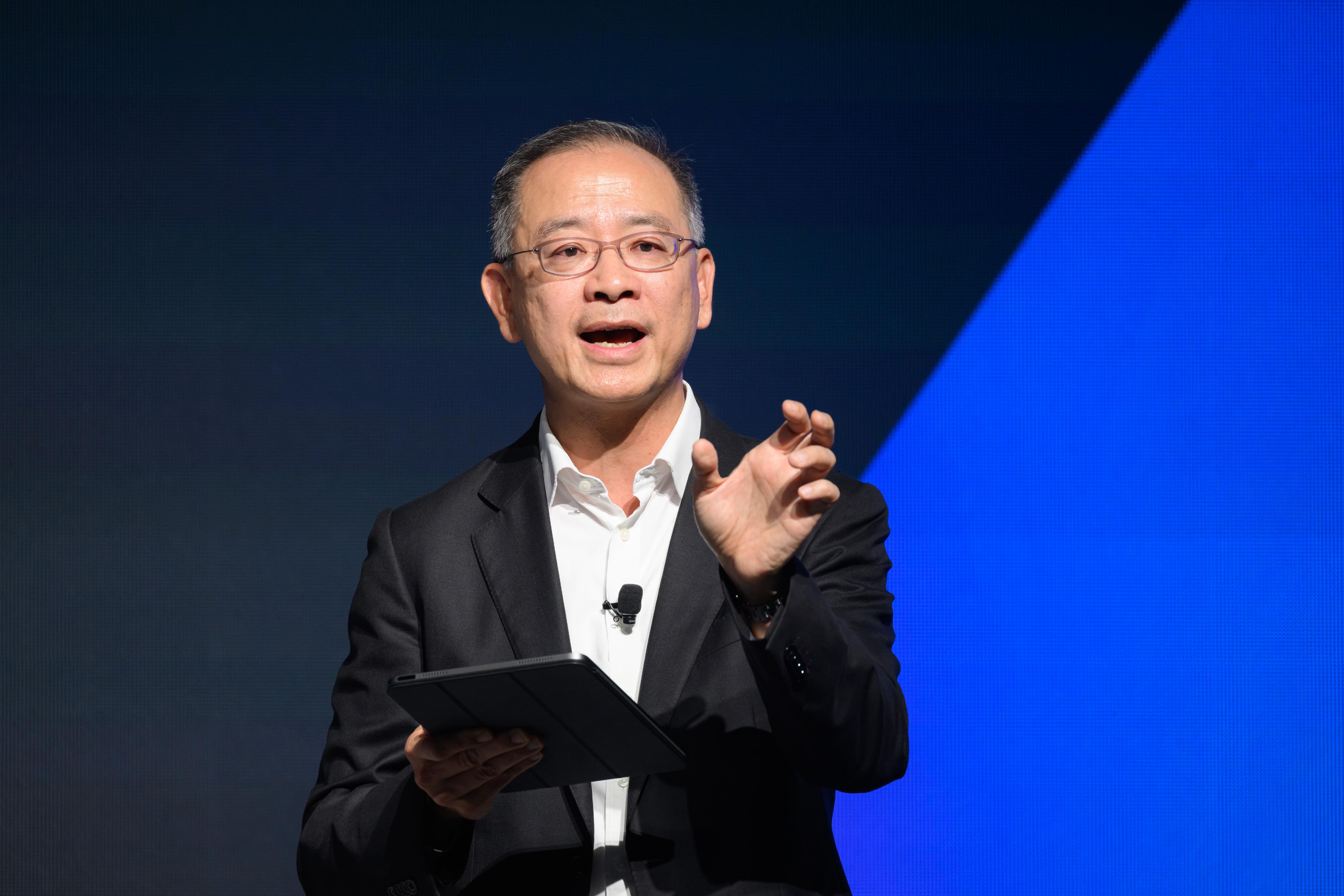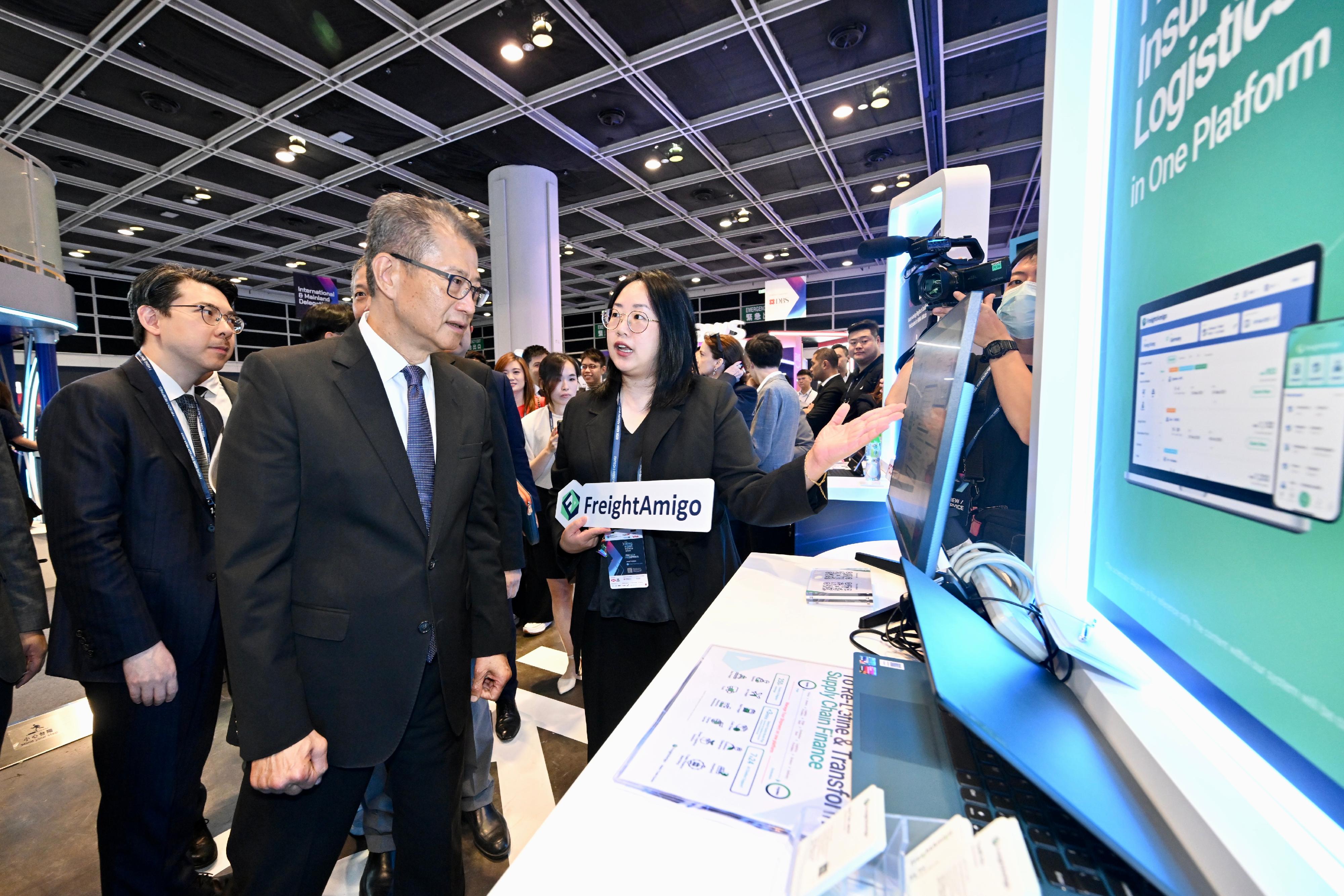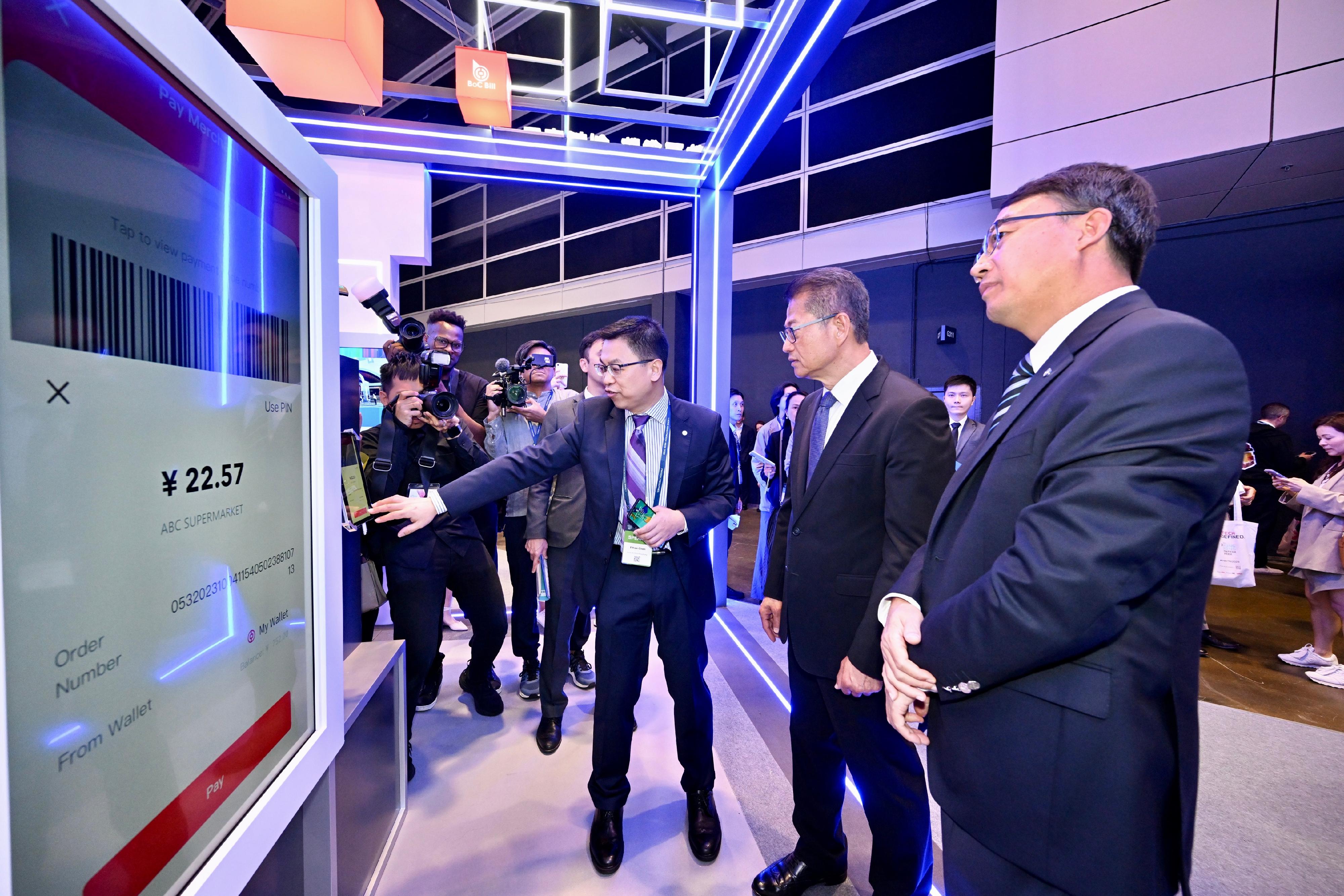Hong Kong FinTech Week 2023 (with photos)
The following is issued on behalf of the Hong Kong Monetary Authority:
The Hong Kong Monetary Authority (HKMA) today (November 2) co-organised Hong Kong FinTech Week 2023 with the InvestHK. The eighth edition of the city's flagship fintech event gave participants worldwide opportunities to build partnerships, exchange ideas and share their fintech journeys.
During the FinTech Week, the HKMA announced the following initiatives to strengthen Hong Kong's fintech capabilities:
FPS x PromptPay QR Payment: The HKMA is working closely with the Bank of Thailand to link Hong Kong's Faster Payment System (FPS) and Thailand's PromptPay, in a new service called "FPS x PromptPay QR Payment", scheduled for launch on December 4. Users will be able to scan and pay at over eight million PromptPay merchants in Thailand using their mobile phones. Thai visitors to Hong Kong will also be able to use PromptPay to pay at any of the around 50 000 FPS merchants in Hong Kong who choose to accept FPS QR payments. The new service will provide an additional safe and efficient payment channel, enhancing customer experience in retail payment and fostering economic development and entrepreneurial prospects in the two economies.
Tokenisation in the bond market: After the successful issuance of the world's first tokenised government green bond earlier this year, the HKMA is in discussions with market participants to explore further use cases for distributed ledger technology (DLT) in capital markets, including a second tokenised government green bond. A report on the inaugural tokenised issuance was published in August as a blueprint for future similar issuances in Hong Kong.
e-HKD Pilot Programme: Working with the industry, the HKMA has completed Phase 1 of the e-HKD Pilot Programme and published an overall assessment of the pilots and the way forward earlier this week. Phase 2 of the programme, which the HKMA intends to commence next year, will explore new use cases for an e-HKD and delve deeper into select pilots from Phase 1.
The "Fintech 2025" strategy (Note 1) unveiled in June 2021 has also made the following positive progress in driving Hong Kong’s fintech development:
All banks go fintech: Building on the results of the Tech Baseline Assessment announced last year, the HKMA continues to proactively encourage fintech adoption in the banking industry, and published a new Fintech Promotion Roadmap in August 2023. The roadmap sets out the initiatives the HKMA will undertake over the next 12 months to promote the adoption of wealthtech, insurtech, greentech, artificial intelligence and DLT. To further promote the development of Open API, the HKMA launched centralised datasets on physical branches and Automated Teller Machines of 20 retail banks in Hong Kong via Open API in September 2023 for public use. In addition, the HKMA has been actively exploring the use of Suptech to enhance the effectiveness and forward-looking capability of its supervisory processes through the adoption of new technologies. An end-to-end digital supervisory platform and a Robotic Process Automation solution have been launched. Three initiatives under the AML Suptech strategy; Macro Analytics, a submission platform for financial-crime risk data, and a horizon scanning tool, have been implemented to safeguard the integrity of the banking system and reduce harm from financial crime. A speech-to-text solution for use in supervision and enforcement work was also launched in October 2023.
Future-proofing Hong Kong for Central Bank Digital Currencies (CBDCs): Aside from the progress on the retail front, the HKMA has achieved a number of milestones in the phased development of wholesale CBDCs (Note 2). Project mBridge is now at the Minimum Viable Product (MVP) development phase and the HKMA aims to launch the MVP next year to pave the way for a production-ready system.
Creating the next-generation data infrastructure: Commercial Data Interchange (CDI), the HKMA's next-generation financial data infrastructure promoting the development of a data-driven economy, is making great strides. Since launch in October 2022, the number of CDI participating banks has reached 26, and key data providers have doubled from six to 12. The CDI utilisation rate has also increased nearly ninefold to 8 900 data requests from close to 1 000 during the pilot phase, with estimated credit approvals exceeding HK$8 billion at the end of September 2023. To maximise the benefits of CDI, the HKMA is exploring how it can be used to further digitalise and streamline various banking processes such as Know Your Customer and working closely with the Insurance Authority to enable cross-sectoral data sharing. By the end of 2023, the Companies Registry will become the first government data source to be connected to CDI via the Government's Consented Data Exchange Gateway.
Expanding the fintech-savvy workforce: The HKMA works to foster fintech talent in Hong Kong through initiatives including the Fintech Career Accelerator Scheme and the Industry Project Masters Network. Over 1 300 students have benefitted from these schemes so far.
Nurturing the ecosystem with funding and policies: The Fintech Supervisory Sandbox (FSS) 3.0 and FSS 3.1 Pilot offer funding support to fintech projects. So far, six projects providing solutions for Chinese-character name screening for AML, regtech and risk management have been approved. To facilitate the sustainable and responsible development of the virtual asset (VA) sector in Hong Kong, the HKMA has been moving forward with full steam in formulating the regulatory regime for stablecoin issuers, and will release a public consultation paper inviting feedback on the proposed regulatory approach and parameters. In addition, the HKMA and the Securities and Futures Commission have jointly issued updated guidance on intermediaries' VA-related activities, and the HKMA is consulting the industry on guidance on other digital asset-related activities conducted by banks with a view to providing protection for consumers.
The Chief Executive of the HKMA, Mr Eddie Yue, said, "This year's edition of the Hong Kong FinTech Week marks 30 years since the establishment of the HKMA. It comes at a time of rapid innovation, with new ideas and opportunities redefining the fintech world. It is essential for our financial services sector to adapt to these changes so that we can continue to be at the forefront of development and achieve the vision set out in the 'Fintech 2025' strategy."
Note 1: The strategy aims to encourage the financial sector to adopt technology comprehensively by 2025, as well as to promote the provision of fair and efficient financial services for the benefit of Hong Kong citizens and the economy.
Note 2: A brochure highlighting the key achievements and future roadmap of Project mBridge was published in October 2023: www.hkma.gov.hk/media/eng/doc/key-functions/financial-infrastructure/mBridge_publication.pdf







